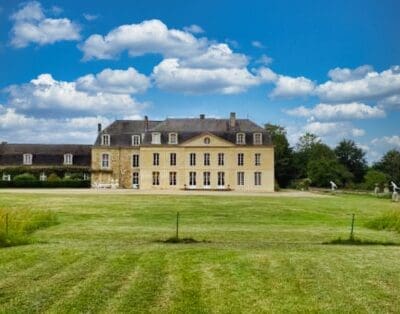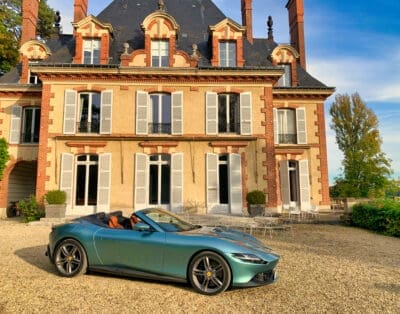Magnificent Valletta: Phoenicia Hotel and the Malta Arts Festival
Valletta, Malta’s capital and arguably the city with the world’s most iconic harbour, is being born again. New bars and restaurants have revitalised the eternally pretty but once staid streets, and major civil projects are transforming the town’s overall aesthetic whilst cleaning up facades in preparation for the impending honour of European Capital of Culture 2018. Despite the somewhat divisive title, in this instance it’s a fitting accolade considering the arts scene is also in rude health, with abundant local talent and significant international events.
It’s all a far cry from the fast fading but previously prevailing image of a British enclave just off the coast of North Africa, a warm tourist hotspot ruled by traditionalist holidaymakers yearning for omelettes. Of course the close relationship between our homeland and this tiny dot of land (along with neighbours in the archipelago, Comino and Gozo) remains impossible to ignore, from red phone boxes to Arriva buses. But, after spending just a few hours in town, it couldn’t be clearer that Carling and chip butties are far from mainstays on the menu.
Navigating the narrow, oft steep streets and there’s an air of elegance about the entire place. Colourfully painted window boxes adorn the ageing, mid-rise town houses that litter the historic centre. The Grand Master’s Palace – open to the public and often used for exhibitions – is resplendent in old world magnificence. As are the 25 churches, not least St John’s Co-Cathedral, which are crammed into an area measuring just 900 by 630 metres. And this sophisticated air of grandeur continues inside our home from home, the stunning Phoenicia Hotel.
Sitting proudly just outside Valletta’s city walls, conveniently located adjacent to the island’s main bus and taxi interchange for those eager to do some independent exploration, the oldest five star address on the island clearly understands first impressions count. Driving up the palm-fringed driveway to arrive at the imposing art-deco entrance steps and the atmosphere of travel’s glory years is tangible. And by that we don’t mean dated, but rather evocative of visiting baronesses, superstar Belgian master sleuths and colonial-era opulence.
A firm favourite with anyone who visits, it’s not hard to see why the residence boasts astronomically high year-round occupancy and return rates. Sense of place and climate aside, which only drops below 20C for a few months of the year, and there’s a wealth of unique aspects to the residence. The building itself, a solid edifice of yellow stone, was constructed within the city fortifications, meaning the pool deck, located in the far corner of the grounds and accessible through beautifully manicured gardens, sits atop defensive ramparts, looking down onto the glistening blue hues of the sea bay below.
Quite the perspective, en route back to the hotel proper it’s impossible to miss the various vegetables, fruits and herbs that have been planted by Head Chef Saul Halevi in a bid to offer guests the freshest ingredients imaginable. Aubergines, tomatoes, broccoli, red cabbage, onions, lettuce, watermelons and more litter the tiered landscape, and taste even better than they look when on our plate later that evening accompanied by catch of the day. Proof that dining is a key aspect of any stay at the Phoenicia, we’re impressed well before catching sight of the stunning balcony the Phoenix Restaurant boasts, an award-winning establishment specialising in what could only be described as ‘Malta on a plate’, whilst offering spectacular open air dining and unparalleled views of both the hotel’s grounds and Marsamxett harbour beyond.
With such an imposing position in Valletta, logically the extent of the Phoenicia’s influence goes well past the driveway, spilling out into the ancient lanes that define the townscape. When we visited last July the Malta Arts Festival was in full swing, with performances from The Globe Theatre Company (Taming of the Shrew) and revered, Grammy Award-winning contemporary classical experimentalists Kronos Quartet amongst the highlights. Not only were said players all bedding down for the night at the Phoenicia, quaffing prosecco for breakfast on the next table and enjoying moonlit cocktails in the Club Bar, but the hotel itself also acted as a major partner in the overall events calendar.
The festival ranks amongst the most exciting to be found anywhere in Europe. Shakespeare’s aforementioned yarn was realised under the stars in one of Valletta’s small but pristine parks. Meanwhile, the strings of Kronos sounded spectacular in the ruins of an opera house, bombed out in World War Two but restored to open-air working order as both a shrine to the important role this island played during the conflict, and concert venue wherein ambience and mood heighten the aural senses. Shadows bounce of stunted remnants of pillars, centuries-old windows gaze upon the roofless carcass from surrounding homes, and the night sky provides the closest thing to a ceiling.
Elsewhere and the focus on location was similarly evident. Faith and Humanity, an exhibition of Italian baroque artist Mattia Preti, who had several links to Malta, had taken over a good portion of The Grand Master’s Palace. The building itself is an artistic marvel, intricately detailed, with wealth and exotic pageantry visible in every room and courtyard. The perfect place to provide a sense of importance and heritage to the rare and, in some cases, never before seen work on display. Meanwhile, the content itself was innovative; high-tech techniques revealed hidden paintings beneath paintings discovered by restoration professionals. Displays were arranged in such a way that the art wasn’t merely being showcased so much as a story was being told, detailing the subject’s life and the politics of his time.
As was explained to us during the process of perusing, this approach is based on a modern British model of exhibitions, which remains something of a rarity outside the UK. It’s certainly a more immersive experience than the usual patron-art distance relationship, confirming that from performances to galleries, Malta Arts Festival is committed to presenting its program not only in a forward thinking manner, but in forms that truly make the most of what the country has to offer. In a world packed full of comparable offerings, it’s an impressively effective way to ensure attendees are truly given an experience that would be impossible to find elsewhere.
Suitably impressed with lodgings, location and the festival’s efforts-albeit we only saw a small portion of the overall itinerary- it’s impossible to argue with the notion that Malta itself is a truly unique destination. A home to some of the oldest free standing structures on Earth (the Megalithic Temples), and another few centuries worth of history, it’s simultaneously intent on embracing the contemporary. So, with the ninth edition of Malta Arts Festival currently in preparation (last year’s dates were 30th June – 14th July, this edition’s program is due to be announced imminently), if it weren’t so much of a cliché the phrase ‘now is the right time to visit’ would immediately spring to mind.
Intrigued by Malta’s magnificence?
Rooms at Phoenicia Hotel start from just £110 per night, valid for advance online bookings.
www.phoeniciamalta.com / 0800 862 0025.
National carrier Air Malta operates up to 26 flights per week from Heathrow, Gatwick and Manchester, with fares from as little as £75 one way, inclusive of taxes and 20kgs of baggage. For more information visit www.airmalta.com
Information on the Malta Arts Festival, which runs from late-June to mid-July), can be found online
http://www.visitmalta.com/en/malta-arts-festival








